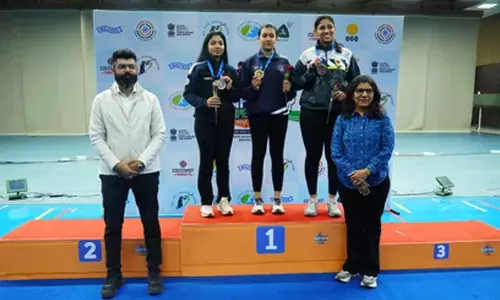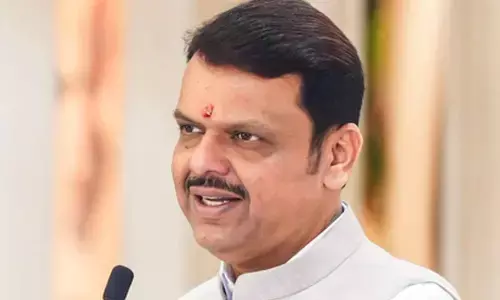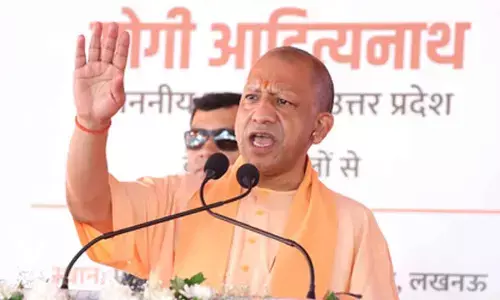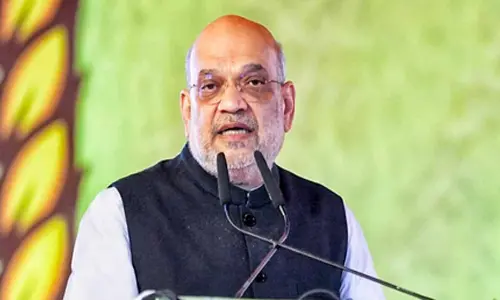Dynamics of Nepal voting pattern

Dynamics of Nepal Voting Pattern, Votes For Both Nepal Parliament And Second Constituent Assembly. Votes for both Nepal parliament and second Constituent Assembly have surprised many. Big story of Nepal elections was drubbing of the Maoists. This ought to have been anticipated. To start with, Maoists were badly splintered.
Votes for both Nepal parliament and second Constituent Assembly have surprised many. Big story of Nepal elections was drubbing of the Maoists. This ought to have been anticipated. To start with, Maoists were badly splintered.
.jpg) In the age of globalisation, foreign policy making is a tricky area. The overarching feature of these times is the International Finance Capital (IFC) driven policies which tend to erode the sovereign policy making space of nation-states. In such trying times as an antidote to this centralising influence, regionalism is bound to emerge. Therefore, during last couple of decades we have seen regional forums emerging in their plenty; and alliances based on mutual complementarities.
In the age of globalisation, foreign policy making is a tricky area. The overarching feature of these times is the International Finance Capital (IFC) driven policies which tend to erode the sovereign policy making space of nation-states. In such trying times as an antidote to this centralising influence, regionalism is bound to emerge. Therefore, during last couple of decades we have seen regional forums emerging in their plenty; and alliances based on mutual complementarities. Consequently, today’s international landscape is dotted with European Union, Shanghai Cooperation Organisation, BRICS, CELAC and their likes. While some of these groupings have come to play crucial roles, some others have failed to take off seriously. There are other groupings like P5 or G7 which represent powerful nations cozying up to the hegemonising thrust of IFC. Contrarily, G77 and loose contextual alliances surface in multilateral forums like UN, WTO and agreement processes as on the question of climate change.
In such a complex background, it is really disappointing to find that the regional cooperation mechanism in South Asia does not show any promise. In fact, movement of SAARC has been quite tardy.
Without going into specificities which hamstring forward movement of SAARC, certain facts need to be recognised. First of these is India’s crucial importance with its humungous population and size of its economy as compared to the other regional neighbours. Obviously, Indian initiative India has to manifest unambiguously in asserting its role without being even mildly invasive.
India can best play her role by reassuring her smaller neighbours that it will be limited to facilitating the developmental course that each of these neighbours, and more importantly, their people choose. The way these nation-states move will be dictated by their own imperatives without India asking for any kind of reciprocity; unilaterally these smaller members of the SAARC can benefit from Indian growth.
But unfortunately, past developments did not confirm to such expectations. Despite complexities, particularly with the emergence of terrorism of various hues in the region, terrorism by non-State actors cannot be addressed by any overt or covert militarisation of conflict. Democratic engagement and dialogue is the only viable course. That most of South Asia suffers from chronic poverty and all other associated problems of backwardness and that these societies are extremely diverse make this patient engagement absolutely imperative.
But unfortunately, here in India there is jingoistic attitude playing out in foreign policy space. The differential levels of democracy in South Asia– their maturity creates provocations; political temperatures rise to demand response in equal measure. And quite often it is the Hindutva crowd spearheaded by hotheads in the BJP who in their anxiety to steal limelight undermine a rational and measured response commensurate with India’s status in the region.
The domestic communal politics colour foreign policy perceptions and immediately reduce Pakistan or Bangladesh as mere Islamic states or tends to revive the Hindu kingdom of Nepal. But little do they realize that a much more concrete study of the evolution of society, economy and politics of these neighbours is necessary to come out with appropriate positions to reinforce the SAARC process.
This complex context should inform our understanding about the recent elections in Nepal. Unfortunately, the mainstream media in India also has not attempted to understand the dynamics which propelled the people in Nepal to vote in the manner that they did.
Votes for both Nepal parliament and second Constituent Assembly have surprised many. Big story of Nepal elections was drubbing of the Maoists. This ought to have been anticipated. To start with, Maoists were badly splintered. With the Mohan Vaidya faction vouching to go back to earlier guerrilla warfare tactics, the tendency to be creative was seriously challenged.
The main party, UCPN (Maoist) led by Prachanda failed to take the process of constitution-making forward. Their political line of competing with other parties in a multi-party democracy in order to conclusively dismantle the vestiges of monarchy and create a vibrant political system as envisaged by Prachanda could not be pursued to fruition.
There may have been complex questions of structure of governance with CPN(UML) favouring a directly elected Prime Minister overseen by a ceremonial President nominated by parliament, the NC preferring a more robust parliament responsible for electing a Prime Minister while the UCPN(M) opting for a directly elected President with executive powers. But with the three pole political process, the opportunity that Maoists had with their overwhelming numbers in the outgoing CA, a little conciliatory approach could have successfully concluded drafting of the Constitution. Failure in doing so obviously enraged the voters.
Despite Vaidya’s attempts to disrupt polls with nine-day long strike call in the run up to elections, the polling recorded a higher turn out as compared to the last elections. Response of Maoists to election results also betrays a lack of credibility. Because after having praised the people, the election commission and the Supreme Court Chief Justice led government for successfully conducting the elections, Prachanda’s response “the election process is against the people’s mandate, conspiratorial and unexpected” coming more than twenty four hours after polling closed and 12 hours after the counting began does not carry any conviction.
But again Western standards cannot be the yardstick for judging these developments. It is a nascent democracy and there will surely be certain unsure steps. The results have thrown up Nepali Congress at the top, with Communist Party of Nepal (UML) close on its heels both in directly elected, as well as, proportional votes. The Maoists have ended up a poor third. But again, there are no clear winners.
With 12.21 million voters of 102 caste and ethnic groups speaking 92 languages across 240 constituencies elected the second CA with a timeframe of one year to draft the constitution. The federal structure is obviously important but the splintering of the Madhesi and Dalit groups, the people’s mandate also underline that increasingly politics of identity and ethnicity was clearly on the decline. Obviously, conciliation is the way forward. India must do everything possible to ensure that such a course remains unencumbered and parties in Nepal exercise their own prerogative to respond to the popular will.
Next Story














